Food Security
Food security occurs when all people have reliable access to affordable, safe, and nutritious foods that meet their dietary needs so that they can live a full life. Based on 2021 Census Bureau data, 1 in 10 U.S. households reported low food security or uncertain access to affordable, nutritious food. Given that access to safe and nutritious food is foundational for good health across the lifespan, Title V Maternal and Child Health (MCH) programs have the opportunity to address social determinants of health, support community leaders, and create long-standing partnerships with other jurisdictional agencies in creating sustainable pathways in food access.
AMCHP is dedicated to highlighting policies and practices that promote community-based and relevant population-health solutions as one strategy to support Title V MCH programs in addressing inequities in food security. AMCHP’s approach to increasing food security includes uplifting the existing community-rooted organizations and families whose well-being has been impacted by low food security and working alongside them as partners.
Office of Disease Prevention and Health Promotion. Food Insecurity. Healthy People 2030. U.S. Department of Health and Human Services.https://health.gov/healthypeople/priority-areas/social-determinants-health/literature-summaries/food-insecurity
Coleman-Jensen, Alisha, Matthew P. Rabbitt, Christian A. Gregory, Anita Singh, September 2022. Household Food Security in the United States in 2021, ERR-309, U.S. Department of Agriculture, Economic Research Service. https://www.ers.usda.gov/webdocs/publications/104656/err-309.pdf?v=3770.3
Rosenberg, J. (2021, February 16). What Is Colonialism? ThoughtCo. https://www.thoughtco.com/colonialism-definition-and-examples-5112779
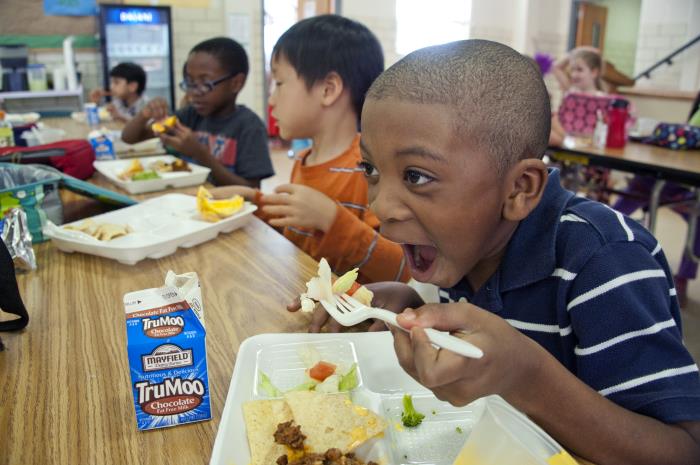
MCH Resources for Increasing Food Security
Title V Food Security Snapshots
AMCHP conducted an environmental scan of all 59 state and jurisdictional programs’ fiscal year (FY) 2021 Annual Reports and FY 2023 Applications available through the Title V Information System (TVIS) to document Title V MCH Block Grant program strategies and activities that address food security.
AMCHP did a key terms search using the following terms: food security, food insecurity, and nutrition. AMCHP found there are currently five jurisdictions that have a State Performance Measure (SPM) prioritizing food security.
Below is a series of snapshots of each jurisdiction that currently has an SPM demonstrating the growing capacity of Title V programs to address food security. In each snapshot, you will find the selected jurisdiction’s priority, objective(s), and strategies/activities. The bolded text in the snapshots below is meant to emphasize jurisdiction partnerships and their role in addressing food security.
Navigate through the snapshots below to learn more:
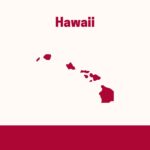 |
 |
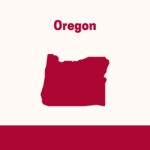 |
 |
 |
Sources:
Maternal and Child Health Bureau. Title V Information System. Rockville, MD: Health Resources and Services Administration. Available at: https://mchb.tvisdata.hrsa.gov/
AMCHP’s Project Highlights & Partnerships
In recent years, AMCHP has actively developed expertise in culturally relevant and equity-centered solutions for food security. Below is a non-exhaustive list of intentional partnerships and projects AMCHP has led or been a part of related to creating equitable food access.
 |
MCH Bridges and What the Health?! crossover Episode 18, led by AMCHP’s Youth Voice Amplified (YVA) committee, talks about the food insecurity crisis in the United States from a systems and lived experience point of view, and how these perspectives impact each other. This episode shares an overview of the state of food insecurity in this country, a background of different terms in the food justice space, and the inequities that present challenges for many in our communities. You will also hear about the importance of empowering communities and understanding solutions to accessing nourishing foods they connect with to create positive health outcomes. |
 |
This Poster presentation from the 2023 AMCHP Conference discusses the need for more culturally inclusive approaches in Federal Nutrition Assistance Programs due to the emphasis on a more traditional westernized diet in nutrition education. This presentation highlights the underrepresentation of people of color in key decision-making roles within the nutrition field and emphasizes the importance of diversity in nutrition education to better serve culturally diverse communities. |
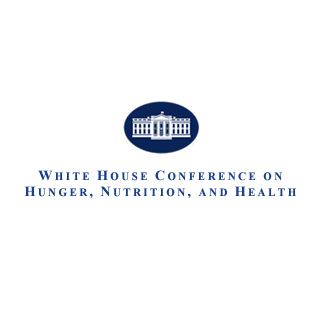 |
On July 7, 2022, the Association of State Public Health Nutritionists (ASPHN) and AMCHP held an online meeting for the White House Conference on Hunger, Nutrition, and Health. People from different backgrounds, like healthcare professionals, community members, and those who have experienced hunger, talked in small groups and shared ideas about how to improve things. This document summarizes their suggestions in different categories. |
 |
AMCHP’s Title V and Early Childhood Nutrition Learning Modules: This set of five e-learning modules explains how Title V programs can incorporate early childhood nutrition initiatives into their programs. It offers practical examples of how policies, systems, and environmental changes can facilitate a smoother integration process. |
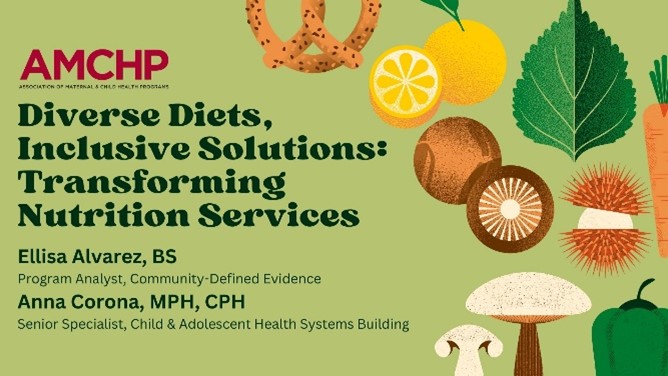 |
AMCHP staff were featured for the keynote address at the Iowa Institute of Public Health Research and Policy’s 2024 Healthy Lifestars Conference. This presentation emphasized the significance of integrating a cultural perspective into federal nutrition assistance programs aimed at advancing food security. Participants gained insights into racial and cultural inequities in nutrition strategies, learned to distinguish between inclusive and inequitable initiatives, and acquired resources for fostering community-engaged, culturally relevant approaches to enhance food security. |
Additional Resources
- The Association of State Public Health Nutritionists (ASPHN): ASPHN is a leading national organization on food and nutrition policy, programs, and services. Their mission is to improve public health by creating and strengthening equitable nutrition policies, systems, environments, and programs for all people through development of diverse public health nutrition leaders and collective action of members nationwide. Learn more about ASPHN on their website.
- ASPHN Food & Nutrition Security Primer: This resource helps you understand different terms related to food and nutrition security. You will find background information explaining why these are important, and there is a table with definitions of terms used by national food, nutrition, and health programs.
Food Security Practices and Programs Database
Welcome to our database designed to help you find practices and programs that promote equitable solutions in addressing food security. You can use this database to explore different approaches, filtering them by specific search terms and criteria, including community engagement, an equity and empowerment lens, state/international location, and ethnicity/race. You have the flexibility to choose from different search parameters to tailor your results to your specific needs and interests.
Once you have conducted your search, you will have the option to view all studies related to your chosen criteria. Within each study entry, you will find two views. The first view provides the title of the program or practice, allowing you to quickly scan for relevant initiatives.
When you select a specific program or practice, the second view will reveal a short, synthesized description of the project’s focus. For those who wish to delve deeper into a program or practice, there is a direct link to the article source where you can access more detailed information.
The summary below provides an overview of our literature review methods:
Through the CDC Public Health Associate program, AMCHP had access to the Stephen B. Thacker CDC Library, where an associate submitted a Literature Search Request using the following inclusion and exclusion criteria and keywords:
| INCLUSION CRITERIA (if one or more of the following criteria is met) |
EXCLUSION CRITERIA | KEYWORDS |
| Study provides solutions working towards dismantling food security | Study centers the discussion solely on food insecurity without discussion of solutions | Food access, food insecurity, socioeconomic, culturally inclusive, vulnerable populations, food dessert, food equity, community-led, community engaged, inequalities, programs, policies |
| Study is discussing culturally inclusive community-engaged approaches to address food insecurity | Study provides a broad overview of equity but does not address current programs or policies towards food equity | |
| Study addresses systemic and socioeconomic factors as contributors to the inequities in food access | ||
| Study provides programs or policies working towards food equity |
Through the Literature Search Request, AMCHP received around 558 title/abstracts meeting one or more of our inclusion criteria. From there, AMCHP reviewers selected about 106 abstracts for full text screening. Finally, 19 studies were selected to synthesize and include in the database.
* When synthesizing the selected studies, AMCHP used the Community Engagement (IAP2 Spectrum) and the Equity and Empowerment Lens to measure how these two selections criteria were met.
Harvest Program in First Nations of Subarctic Canada: The Benefits Go Beyond Addressing Food Security and Environmental Sustainability Issues
This paper has two main goals: first, to study the food sharing system of the Sharing-the-Harvest program, and second, to explore the program's benefits beyond just food security and environmental issues through interviews. The program is about helping subarctic First Nations people gather geese, a traditional food, to share with their communities and protect the environment by controlling the...
Read MoreThe Potential Use of Agroforestry Community Gardens a Sustainable Import-Substitution Strategy for Enhancing Food Security in Subarctic Ontario, Canada
Many northern First Nations communities face food insecurity because they rely on expensive imported food. This study looks at whether Agroforestry Community Gardens (AFCGs) could help. Agroforestry is an ancient way of farming that combines trees and crops for better results. Unlike regular farming, agroforestry keeps the environment diverse and needs fewer chemicals. These systems can help food...
Read MoreA reservoir of ethnobotanical knowledge informs resilient food security and health strategies in the Balkans
Ethnobotany is the study of how people use plants, considering how culture affects their knowledge and practices. In a mountainous area called Gora in Albania, two different groups of people, Gorani and Albanians, faced food shortages because of tough times. They relied on wild plants for food when other crops weren't available. This study looked at how these groups used 104 different plants and...
Read MoreNutrition Interventions Integrated into an Existing Maternal, Neonatal, and Child Health Program Reduce Food Insecurity Among Recently Delivered and Pregnant Women in Bangladesh
Researchers used a special test to see if pregnant and breastfeeding women knew more about nutrition when they got special care during pregnancy. They also wanted to know if encouraging families to spend money on good food, without giving them food directly, could help make sure they had enough to eat at home. The "Alive & Thrive" plan combined different ways to improve nutrition during pregnancy...
Read MoreImpacts of COVID-19 on agriculture and food security in developing countries: potential mitigation strategies
This paper tells a story about how the COVID-19 pandemic affected food and farming in poorer countries. It starts by talking about how many people got sick in these places and how they tried to stop the sickness from spreading. Then, it explains how the pandemic made it hard for people to get enough food in these countries. Finally, it gives ideas about what governments, groups, and people can do...
Read MoreIndigenous Community Perspectives of Food Security, Sustainable Food Systems and Strategies to Enhance Access to Local and Traditional Healthy Food for Partnering Williams Treaties First Nations
In this study, researchers teamed up with the Williams Treaties First Nations in southern Ontario to work together on understanding food security and sustainability. They aimed to improve local food systems so that people can access food easily. The researchers used an Indigenous method called the conversational method, within a community-based approach, to help the community define what food...
Read MoreImprovements to Female Autonomy and Household Decision-Making Power from an Intervention Targeting Improved Food Security: A Gender-Based Analysis of the Rajasthan Nutrition Project
This study focused on the Rajasthan Nutrition Project (RNP) to check if it changed how people eat and improved gender equality and women's decision-making. The project aimed to teach about nutrition, help women manage resources fairly, and plan for better family nutrition. They used five methods: teaching about nutrition, supporting farming, talking about gender, connecting to health services, and...
Read MoreImplementation of the Navajo fruit and vegetable prescription programme to improve access to healthy foods in a rural food desert
This paper explains how the Navajo Fruit and Vegetable Prescription Programme (Navajo FVRx) was developed using a community-based approach. The program aimed to improve people's access to healthy food. The approach involved working closely with the Navajo community, understanding their needs and resources, and getting input from different partners. People who could benefit from the program were...
Read MoreA Pilot Food Bank Intervention Featuring Diabetes-Appropriate Food Improved Glycemic Control Among Clients In Three States.
This study focused on an area where diabetes interventions for people who don't have enough food haven't been studied much. They tested a new approach using food banks and their partner pantries to help people with diabetes. The test had four parts: checking for diabetes and tracking blood sugar, giving out diabetes-friendly food every month or two, sending people without regular healthcare to...
Read MoreHealthy Retail as a Strategy for Improving Food Security and the Built Environment in San Francisco
This paper talks about a program in San Francisco, California, that aimed to make neighborhood stores in low-income areas healthier. They used a three-part plan: first, they helped stores change their layout to fit healthier products. Second, they gave advice on how to get healthy products and run a good business. Third, they involved local residents to help and paid them for their work. The...
Read MoreInnovative Partnership to Address Food Insecurity during the COVID-19 Pandemic: The Brighter Bites Produce Voucher Program
During the COVID-19 pandemic, Brighter Bites, a school-based non-profit organization helping low-income families with access to fresh healthy foods and nutrition education, had to stop their regular programing due to school closures. This made it harder for families in the six cities across the United States who depended on their help. To tackle this, Brighter Bites partnered with grocery stores...
Read MoreKeiki Produce Prescription (KPRx) Program Feasibility Study to Reduce Food Insecurity and Obesity Risk
This feasibility study focused on a community-based program called Keiki Produce Rx (KPRx) on the Wai‘anae Coast of O‘ahu. The program aimed to improve nutrition among children by providing parents with prescriptions to purchase fresh fruits and vegetables from the Mākeke Farmers’ Market. The community has a high proportion of Native Hawaiian and Other Pacific Islander (NHOPI) residents....
Read MoreAcceptability and Willingness to Pay for a Meal Kit Program for African American Families with Low Income: A Pilot Study
This study aimed to assess the utilization, acceptability, and willingness to pay for a healthy meal kit program among African American main food preparers with low incomes and children (n=36). The researchers partnered with a public high school's Culinary Arts program to create the affordable meal kit intervention, "Slice and Spice," and provided participants with weekly meal kits containing...
Read MorePolicy Implications of the COVID-19 Pandemic on Food Insecurity in Rural America: Evidence from Appalachia
In Spring 2021, this study conducted five focus groups to understand how residents of a rural Appalachian community in Kentucky dealt with the effects of the COVID-19 pandemic on their access to food. The participants in the focus groups were adults from the community. The discussions were recorded and later transcribed word-for-word by researchers and graduate students who received appropriate...
Read MoreCombating Child Summer Food Insecurity: Examination of a Community-Based Mobile Meal Program
This study looked at a program that provides meals through mobile services in a community where there are big differences in people’s financial situations. The researchers used both qualitative and quantitative methods to understand how well the program worked and how people in the community experienced it. In this community, a mobile meal program was created specifically for children. The...
Read MoreA Cluster Randomized Controlled Trail of a Home-Delivered Food Box on Food Security in Chickasaw Nation
The U.S. Department of Agriculture gave a $9.7 million grant to Chickasaw Nation Nutrition Services (CNNS) for a project called “Packed Promise.” This project aims to provide monthly food boxes filled with nutritious items and a check to buy fruits and vegetables to families living in 12 rural counties within the Chickasaw Nation territory in south-central Oklahoma. The research questions that...
Read MoreInterest in Receiving Nutrition Information Through Social Media Among Food-Security Program Participants in Washington, DC
Researchers partnered with Martha’s Table, a nonprofit organization that provides nutrition education and assistance to individuals and families in the greater Washington, DC area; to see how interested adults in food security programs are in getting nutrition information through social media. The researchers gave a form to the attendees, asking for their permission to participate. If people...
Read MoreHow Gardening and a Gardener Support Program in Detroit Influence Participants’ Diet, Food Security, and Food Values
This study aimed to understand how gardening affects the diets of people who participate in a gardening support program in Detroit, Michigan. Wanting to know how growing their own food influenced what they ate and how they thought about their diet. Keep Growing Detroit is an organization that helps people in Detroit with gardening. They provide resources, education, and support through their...
Read MoreA pilot food prescription program promotes produce intake and decreases food insecurity
The purpose of this pilot study was to investigate whether a collaborative clinic-community based food prescription program could work effectively in an area with a high rate of food insecurity in Harris County, TX. Through enrolling participants from two school-based clinics and one Federally Qualified Health Center in North Pasadena, which is an area with a significant food insecurity issue in...
Read More

